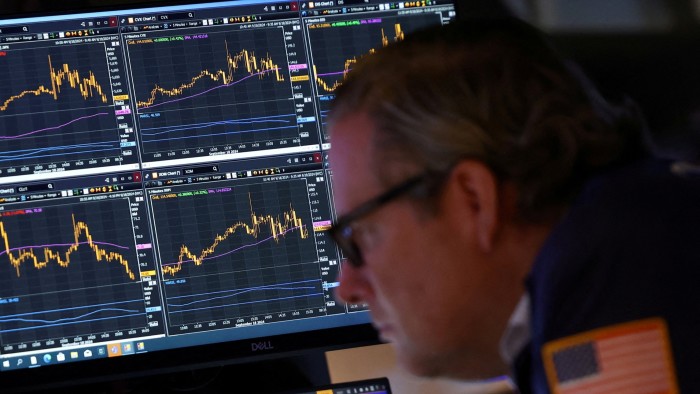Stay informed with free updates
Simply sign up to the Exchange traded funds myFT Digest — delivered directly to your inbox.
Assets in global exchange traded funds have soared to $15tn, powered by a stampede away from mutual funds that underscores how the vehicles are reshaping the asset management industry.
Investors have poured $1.7tn into ETFs this year, pushing the industry’s total assets up 30 per cent compared with 2023, according to data from research group ETFGI. The US has been at the centre of the influx of new cash, notching up inflows of more than $1tn as traders have sought to tap into a big rally in Wall Street equities.
The rush of inflows highlights how investors are turning to ETFs for a wider variety of strategies beyond “passive” index-tracking where the products initially made inroads in the early 1990s. Actively managed ETFs and those focusing on government and corporate debt are both gaining in popularity, eating away at an area traditionally dominated by mutual funds.
“The ETF structure is becoming the everything structure for the investment management industry,” said Daniil Shapiro, director of product development practice at consultancy Cerulli Associates, citing ETFs’ lower costs, innovative strategies and “tremendous fit” for a wide variety of portfolios.
BlackRock, Vanguard and State Street are the three biggest ETF providers. The trio oversee huge ETFs that track the S&P 500 index, giving investors broad exposure to the US equities market.
Funds that track other indices are also popular, as are leveraged ETFs, which allow traders to make turbocharged bets on everything from Tesla shares to chip stocks and bitcoin.
Mutual funds have bled about $2tn in assets over the past three years, with investors preferring the ability to trade and price ETFs throughout the day during market trading hours. ETFs also offer tax advantages in the US, which have polished their appeal.
Despite the move away from mutual funds, the industry remains much larger than ETFs, with $21.6tn in assets under management. The vehicles are still widely used for retirement accounts, while passive mutual funds have managed to attract modest inflows in recent years.
Shelly Antoniewicz, chief economist for the Investment Company Institute, an industry group, said she expected asset managers to move towards an equilibrium in which more strategies are available both as a mutual fund and as an ETF.
“They’re leaving it up to the end investor to decide which one is most appealing to them and which one fits their needs,” Antoniewicz said.
More than 30 asset managers have asked regulators for permission to add ETF share classes to existing mutual funds — an approach patented and used to great effect by Vanguard but denied to the fund manager’s rivals. If approved, these structures could allow investors a new path to switch their investment exposure from mutual funds to ETFs.
Shapiro noted that “there is tremendous industry optimism for these types of products to secure [regulatory] relief in the new year” since US president-elect Donald Trump, who takes office in January, has vowed to cut regulations.
Read the full article here

